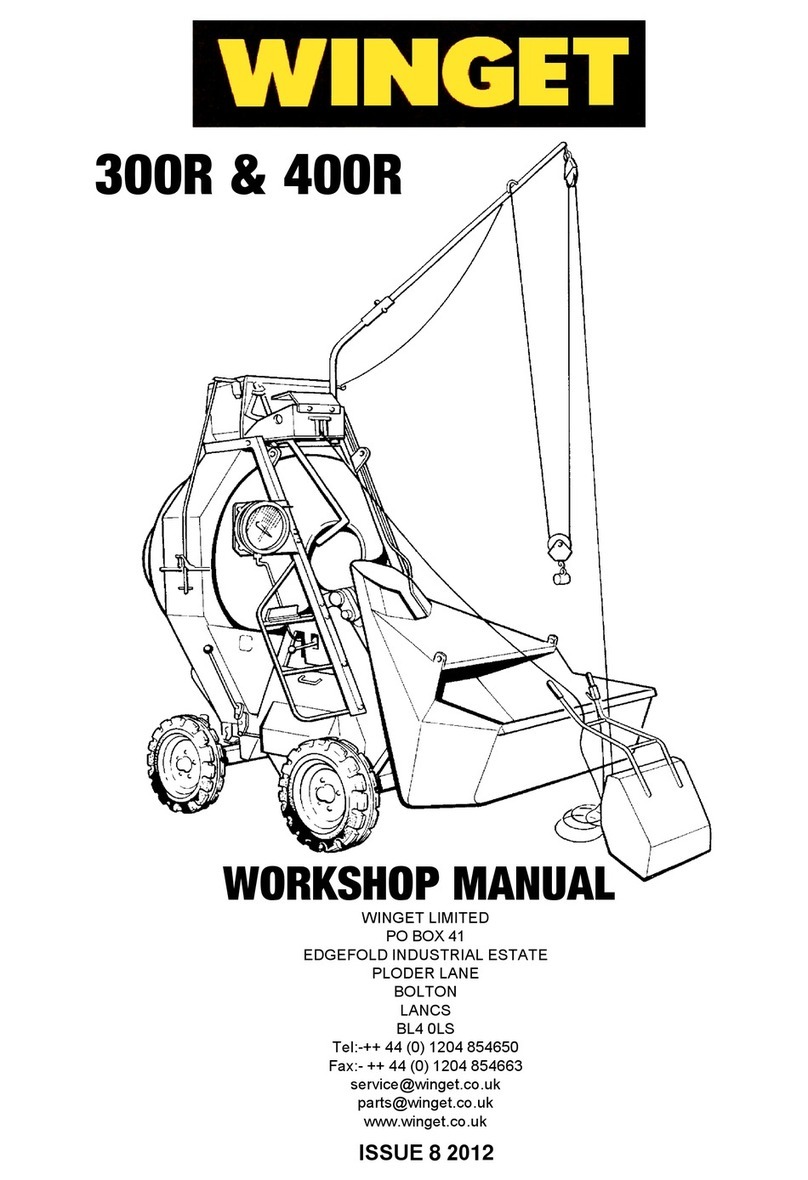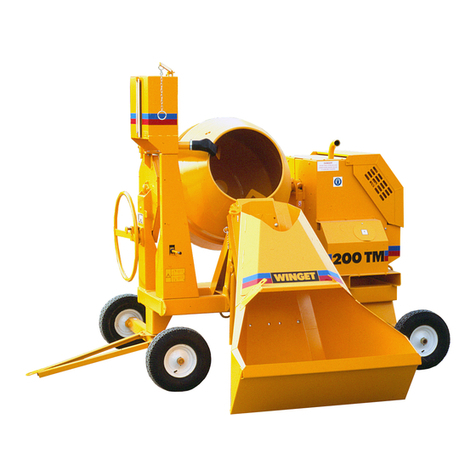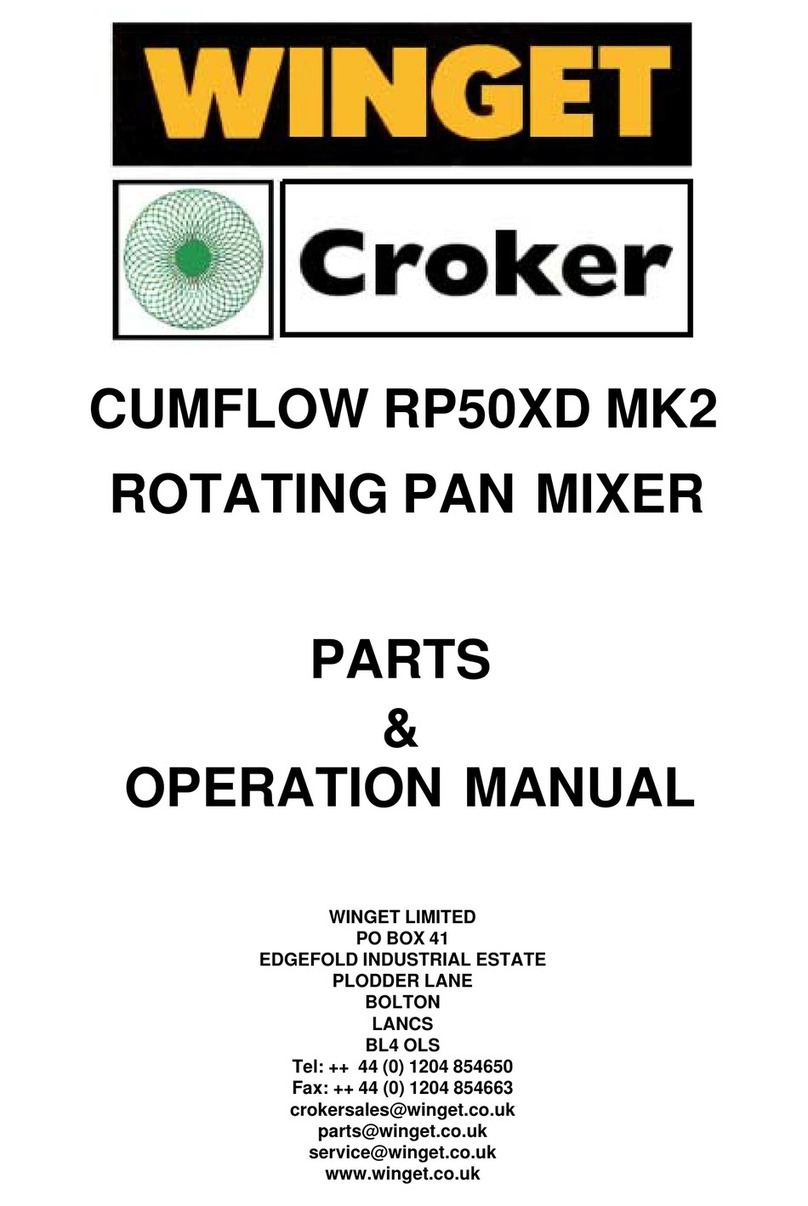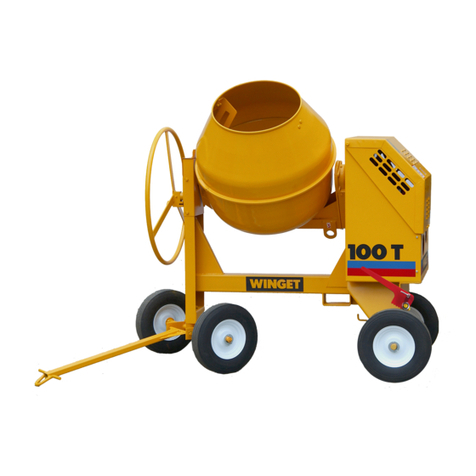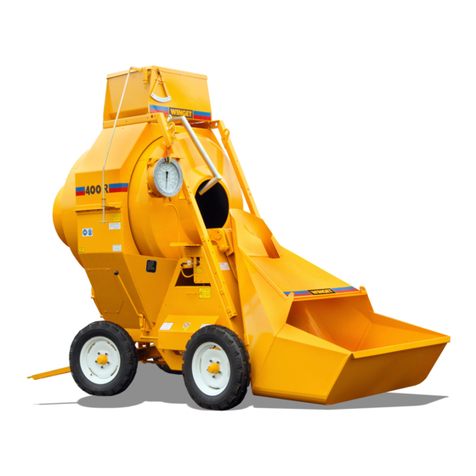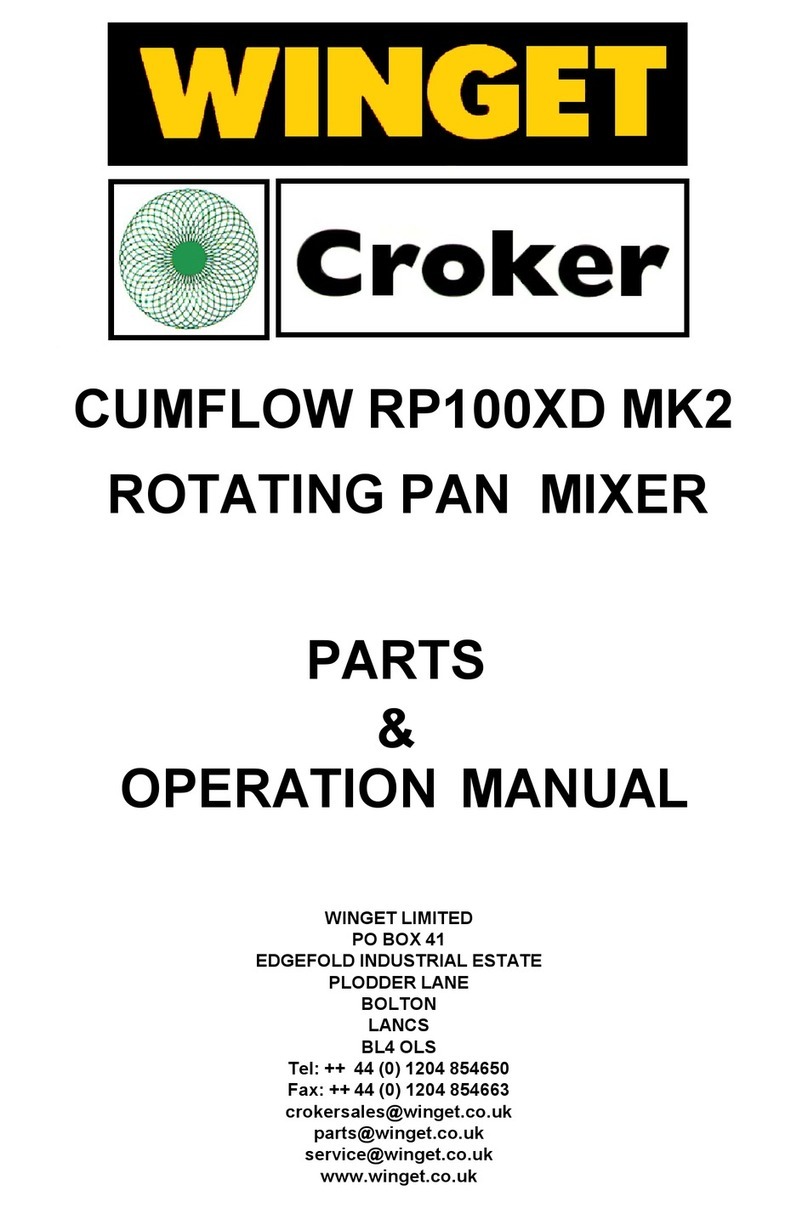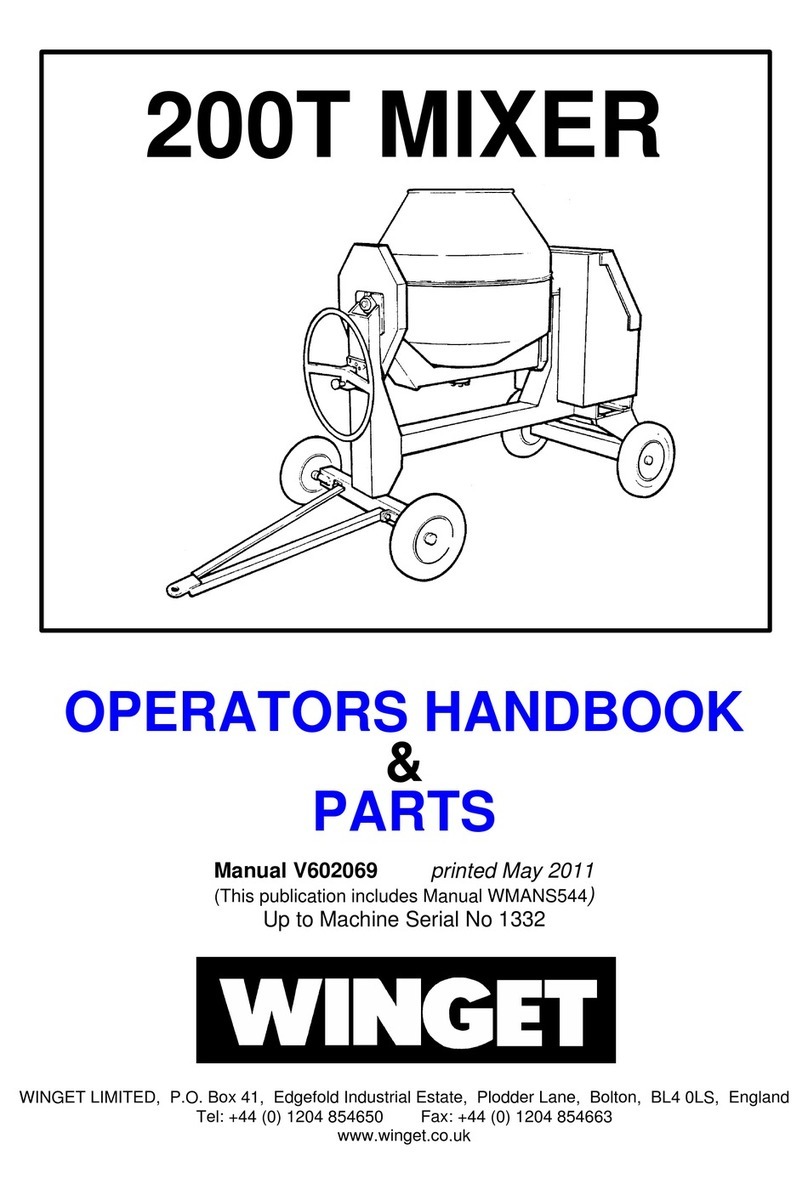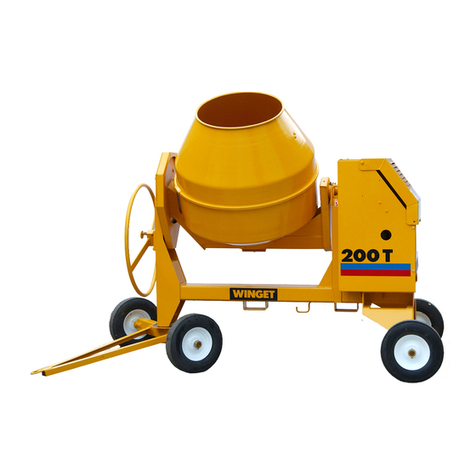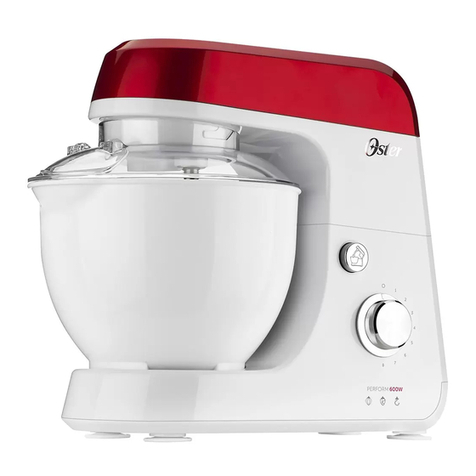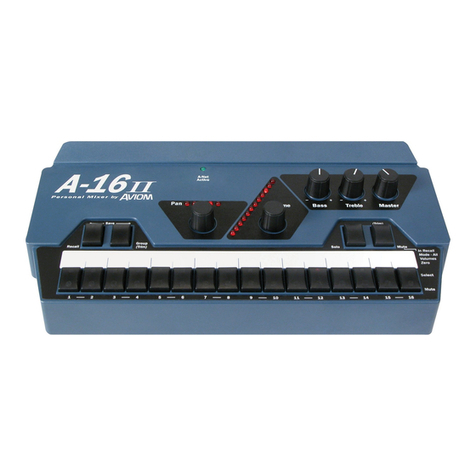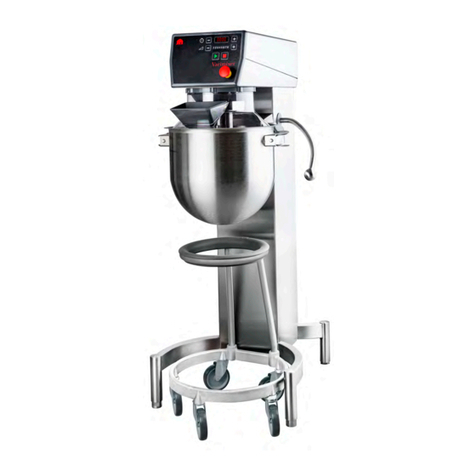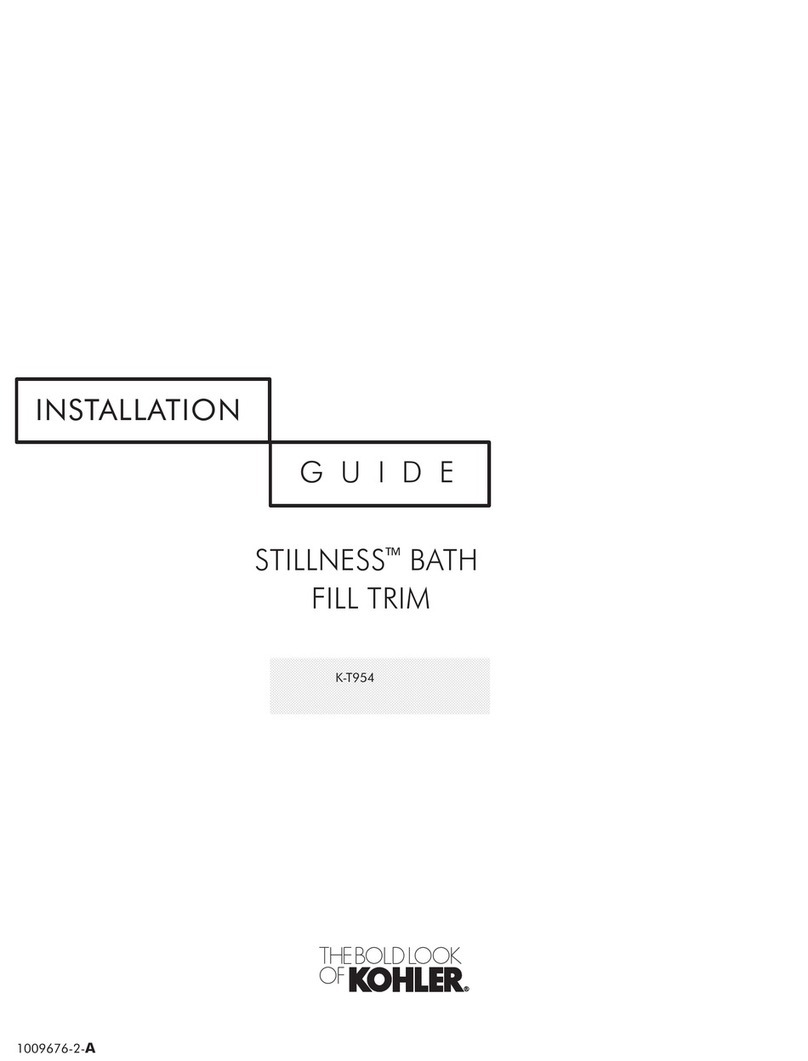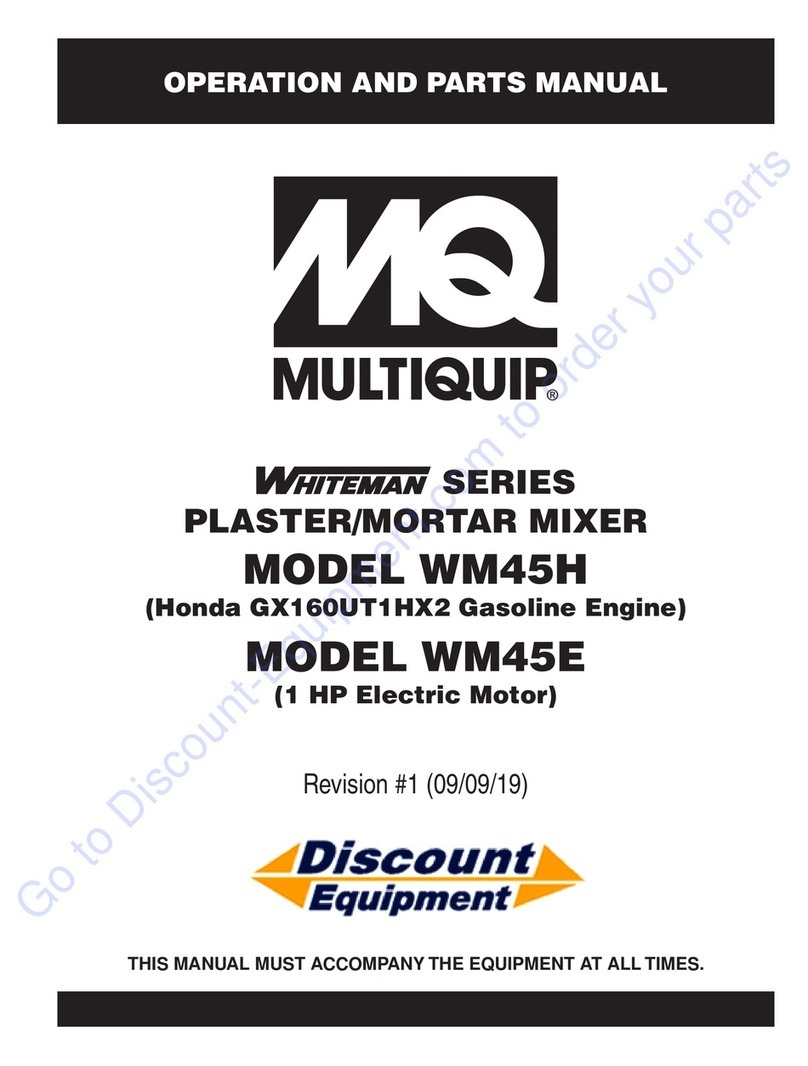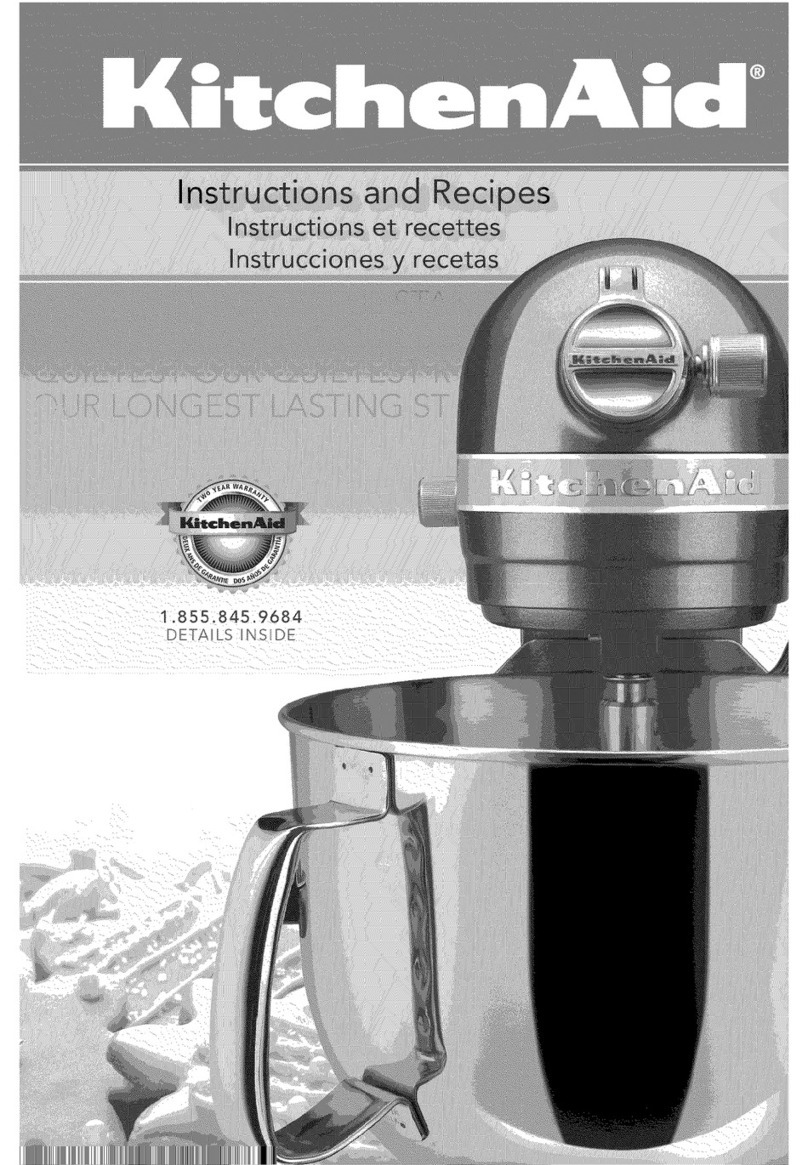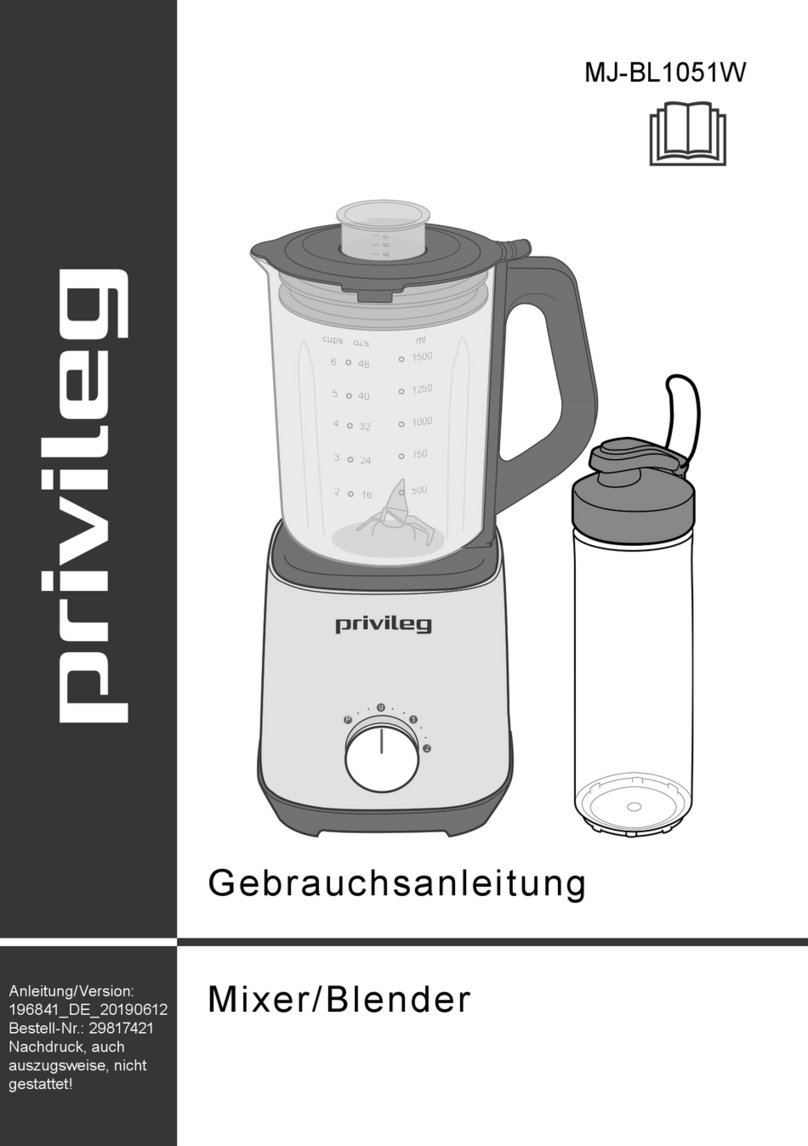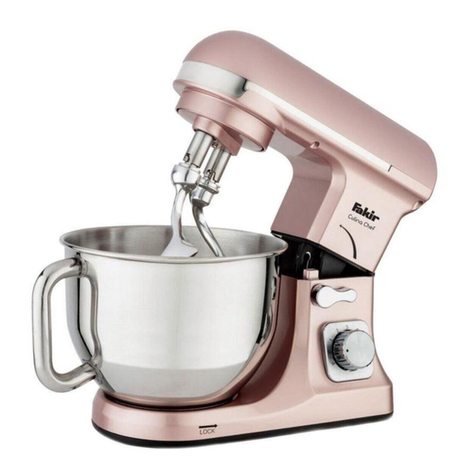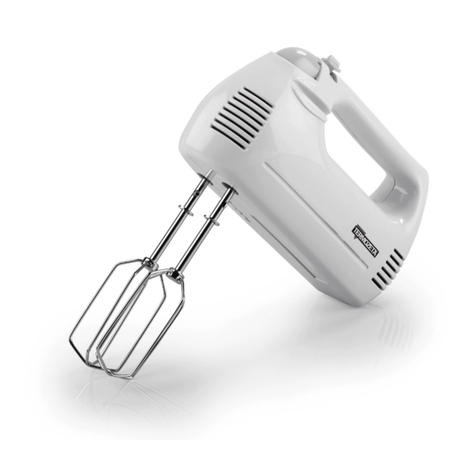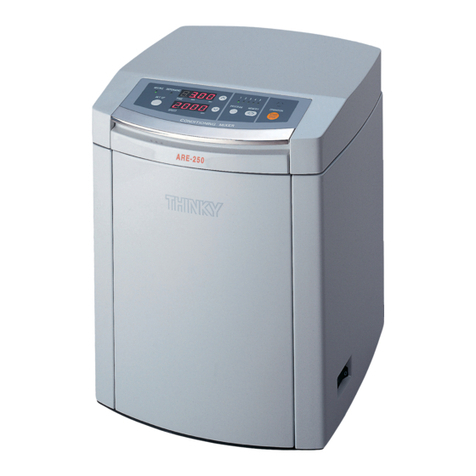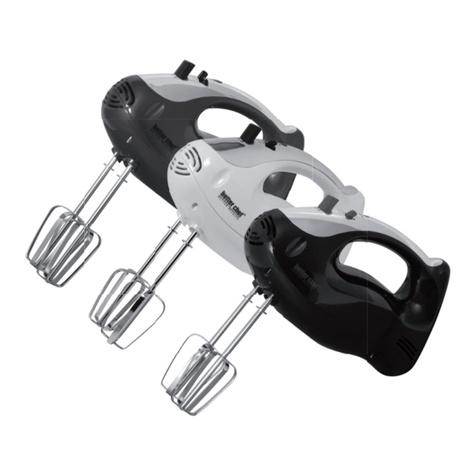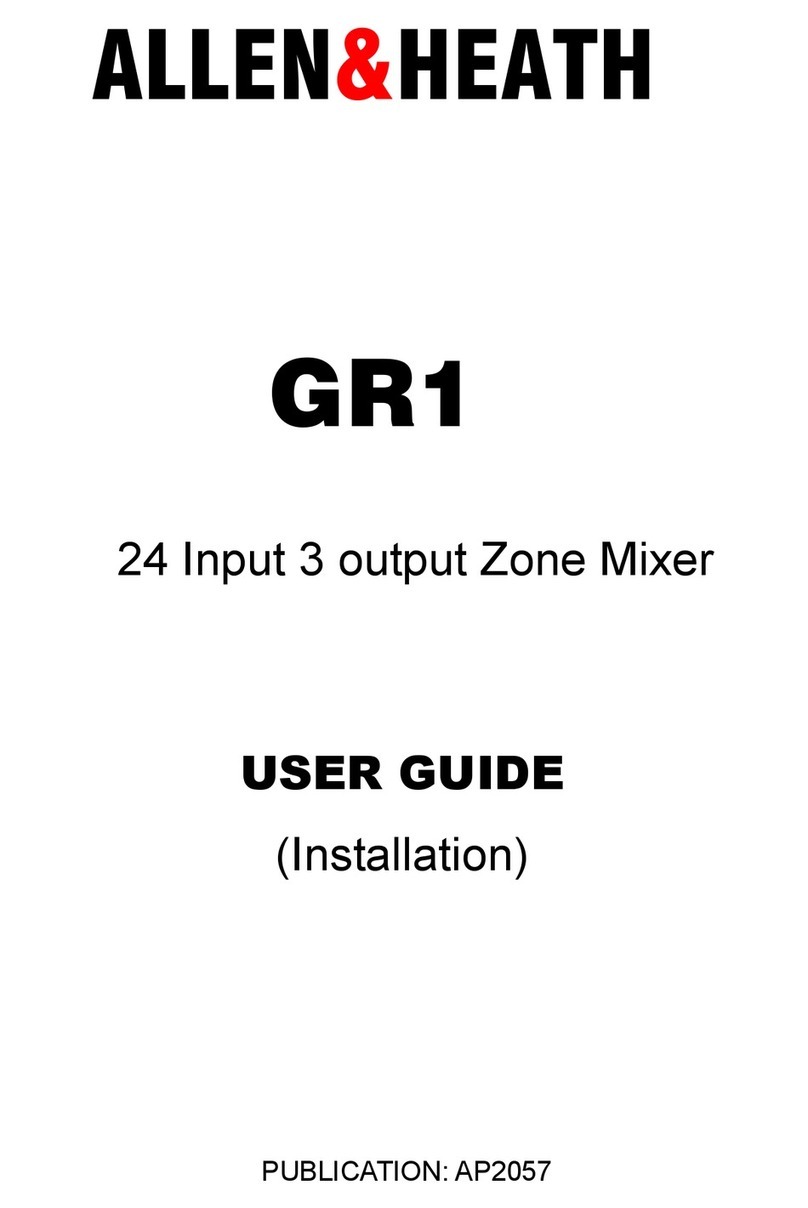
WORKSHOP MANUAL
100T / 150T / 175T
Winget Concrete Mixers
From 1988 Onwards
Issue 9 2015
With taper roller bearings, tighten the nut then back off 1/4-1/2 a turn, check that
the hub spins freely without to much end float, .004” is sufficient. Align the castle
nut with the split pinhole in the stub axle and fit the retaining split pin. Recheck
the hub rotates freely and refit the dust cap. Charge the hub with grease until the
grease is visible in the breather hole in the cap.
It is recommended that the wheel bearing adjustment be rechecked after giving
the mixer a short “road test”.
Front Axle Replacement- Four Wheel Tow
Depending on the age of the mixer two different front axle assemblies are fitted.
Early Mixers
Early mixers have a swivel fitted to the front axle, which allows the axle to
oscillate as well as rotate.
Jack up and support the mainframe so the front wheels are clear of the ground.
Remove the circlips securing the pivot pin through the front axle and swivel
bracket. Knock out the pivot pin and remove the axle. The swivel bracket is
secured to the mainframe by a spiral pin, using a suitable drift knock out the pin
and remove the swivel.
Replacement is a reversal of the above procedure however pins and shafts
should be coated with copperslip on assembly. When fitting the spiral pin
through the swivel bracket rotate the bracket through a full 360 degrees making
sure the pin does not foul the mainframe. Fit new circlips and split pin.
Early 175T mixers have a separate bracket bolted to the mainframe into which
the swivel is located. This is secured using four nuts, bolts and washers and can
be removed once the axle and swivel have been removed as described above.
Replacement is a reversal of this procedure.
Later Mixers
On later Mixers the front axle only rotates through 360°, it will not oscillate and
the front axle now locates directly into the front leg of the mainframe where it is
secured via a spiral pin.
Jack up and support the mainframe and knock out the spiral pin. Remove the
axle. Replacement is a reversal of the procedure however the pivot pin and axle
shafts should be coated with copperslip. The axle should be rotated through
360°degrees making sure the spiral pin does not foul the mainframe.

